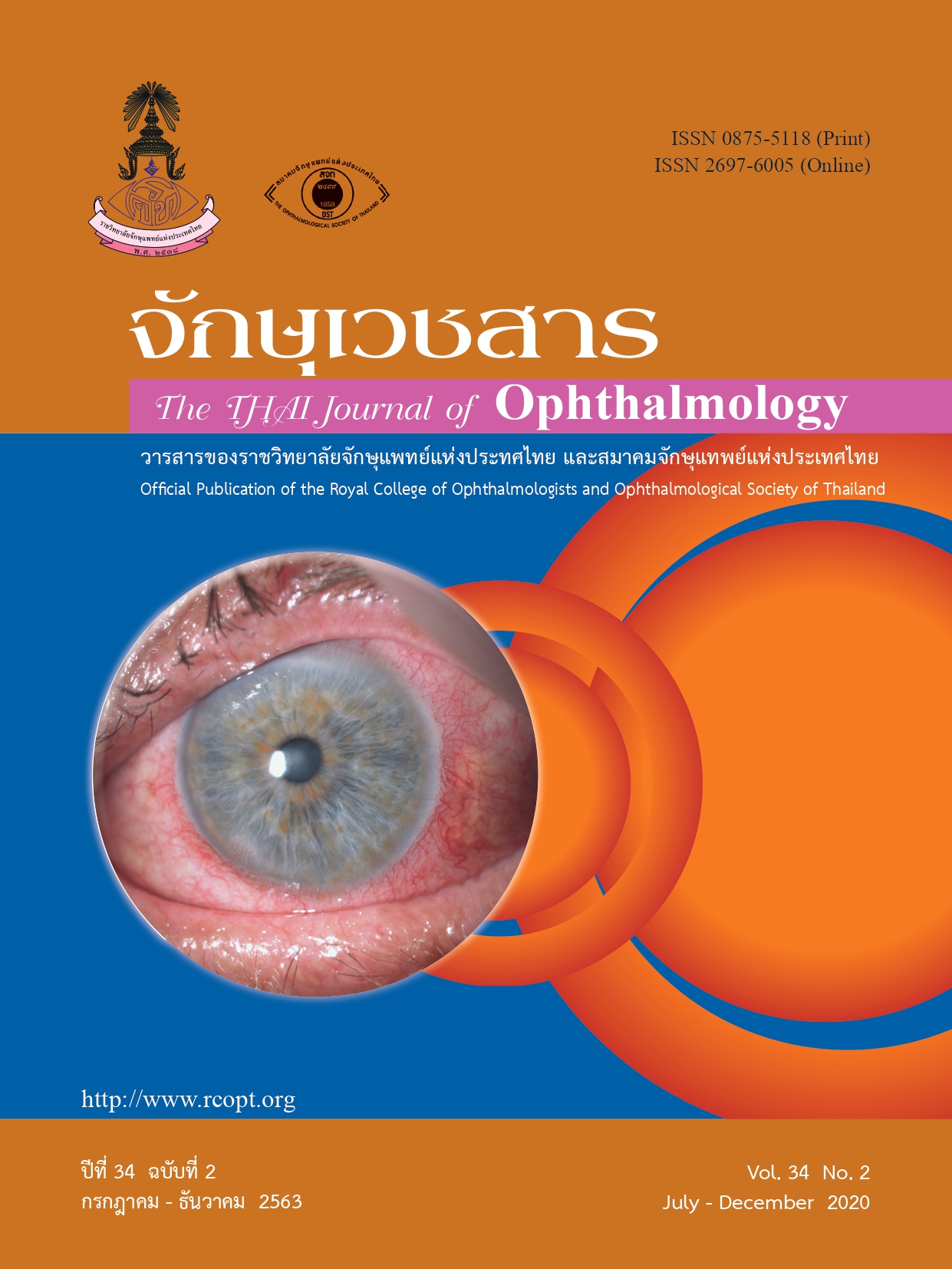Pseudomonas Keratitis Associated to Wearing Two Contact Lenses in One Eye
Keywords:
Pseudomonas aeruginosa, keratitis, two contact lensesAbstract
This paper presented a patient who developed Pseudomonas keratitis followed by overnight wear
and two contact use in the left eye in an elderly patient. Risk factors were identified including old age,
overnight wear, and internet contact lens purchase. Gram negative bacilli were identified from patient’s
corneal specimen. Cultures of the corneal sample yielded growth of Pseudomonas aeruginosa. The
clinical sign and symptom improved after topical fortified gentamicin and levofloxacin were prescribed.
References
Stapleton F, Carnt N. Contact lens-related microbial keratitis: how have epidemiology and genetics helped us with pathogenesis and prophylaxis. Eye (Lond) 2012;26:185-93.
Eltis M. Contact-lens-related microbial keratitis: case report and review. J Optom. 2011; 4:122–7.
Garg P. Diagnosis of microbial keratitis. Br J Ophthalmol 2010;64:961-2.
Friedman NJ, Kaiser PK, Pineda R. The Massachusetts eye and ear infirmary illustrated manual of ophthalmology. 3rd ed. Philadelphia: Elsevier; 2009: 188-204.
Chawla B, Agarwal P, Tandon R, Titiyal JS, Sharma N, Agarwal T, et al. In vitro susceptibility of bacterial keratitis isolates to fourth-generation fluoroquinolones. Eur J Ophthalmol 2010; 20:300-5.
Stapleton F, Keay L, Edwards K, Naduvilath T, Dart JK, Brian G, et al. The incidence of contact lens-related microbial keratitis in Australia. Ophthalmology 2008; 115:1655-62.
Dart JK, Radford CF, Minassian D, Verma S, Stapleton F. Risk factors for microbial keratitis with contemporary contact lenses: a case-control study. Ophthalmology 2008;115:1647-54.
Cope JR, Collier SA, Rao MM, Chalmers R, Mitchell GL, Richdale K, et al. Contact lens wearer demographics and risk behaviors for contact lens-related eye infections – United States, 2014. MMWR Morb Mortal Wkly Rep 2015;64:865-70.
Preechawat P, Ratananikom U, Ledrvitayasakul R, Kunivisarut S. Contact lens – related microbial keratitis. J Med Assoc Thai 2007;90:737-43.
Downloads
Published
Issue
Section
License
The Thai Journal of Ophthalmology (TJO) is a peer-reviewed, scientific journal published biannually for the Royal College of Ophthalmologists of Thailand. The objectives of the journal is to provide up to date scientific knowledge in the field of ophthalmology, provide ophthalmologists with continuing education, promote cooperation, and sharing of opinion among readers.
The copyright of the published article belongs to the Thai Journal of Ophthalmology. However the content, ideas and the opinions in the article are from the author(s). The editorial board does not have to agree with the authors’ ideas and opinions.
The authors or readers may contact the editorial board via email at admin@rcopt.org.


